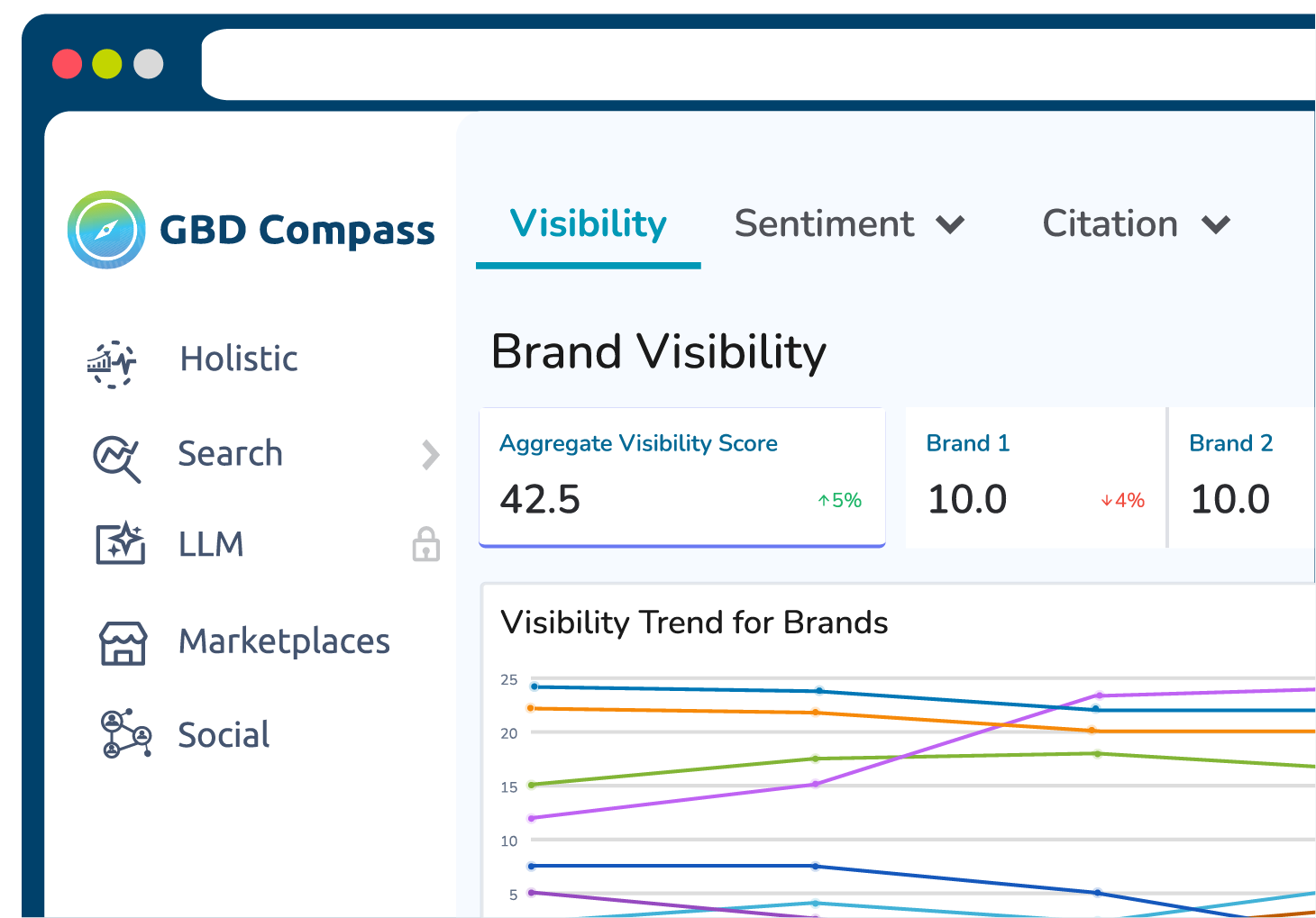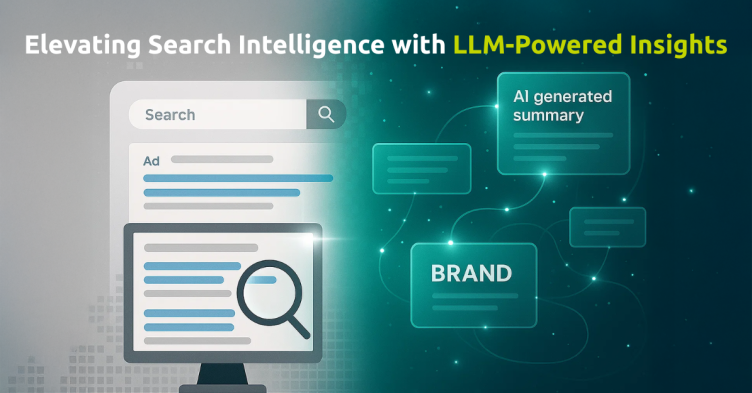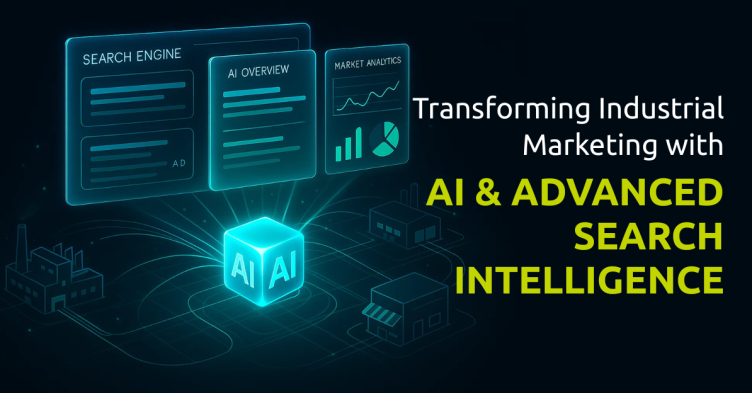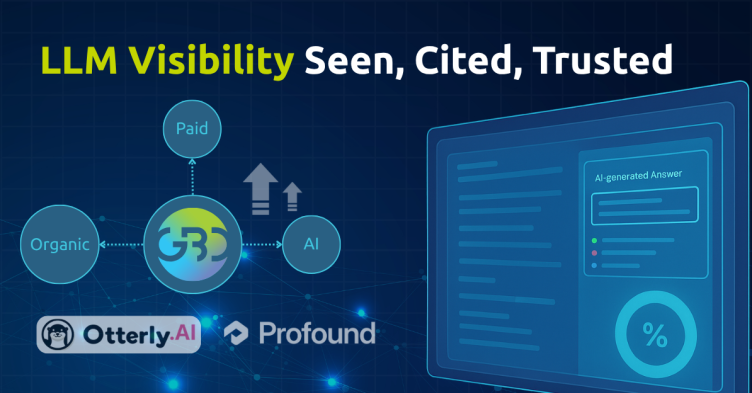Not long ago, being “ranked #1” on Google meant you were visible. Not anymore.
Today, AI systems like ChatGPT, Google’s AI Overview, and Perplexity answer questions before users ever see a list of links. A student researching “best online MBA programs” might get instant AI summary highlighting competitors and never even see your university’s page.
This shift has redefined what visibility means. To stay discoverable, brands and institutions must measure not just where they rank, but how often they’re represented, cited, or summarized within these AI-driven experiences.
Why Traditional Rankings Don’t Tell the Whole Story
Conventional SEO tools still report “rankings,” but those rankings no longer reflect what users see.
Today’s results pages blend:
- AI-generated summaries
- Product listings and local maps
- Videos, Reddit threads, and Q&A panels
If your listing is below an AI Overview or shopping carousel, your visibility and click share is effectively zero, even if you rank “#1.”
For example, in education, a university may appear for “LVN (Licensed Vocational Nurse) to BSN (Bachelor of Science in Nursing.) programs,” but Google’s AI Overview might feature a competitor’s summary first. The shift is invisible in analytics but visible in reality fewer impressions, fewer clicks, lower engagement.
That’s why platforms like GrowByData’s analyze the entire results page including AI layers to show brands and universities how they’re actually seen across devices, geographies, and AI surfaces.
Why Tracking LLM Visibility Matters
LLMs have quietly become the new gatekeepers of trust. Whether it’s a parent researching “best air purifiers for allergies” or a student comparing “online BSN programs,” the first answer often comes from an AI not, a brand website.
That means your brand’s visibility inside LLM responses is as critical as its Google ranking. Forward-thinking organizations are using visibility data to:
- Track brand citations and mentions within AI answers.
- Compare exposure across ChatGPT, Perplexity, and Google AI Overview.
- Identify which competitors dominate AI-generated content.
- Discover new “AI keywords”, phrases that drive inclusion in summaries.
In education, this might mean uncovering that your “online nursing degree” appears in fewer AI summaries than a competitor’s program even if both rank similarly on Google. That’s a visibility gap worth closing.
Learn in detail about AI Search Visibility and its Importance
From Data to Decision-Making
Data only creates value when it drives action.
Modern visibility dashboards now unify organic, paid, and AI insights into a single, dynamic view, showing not just where you rank, but where you’re actually seen.
For instance, an education provider can instantly see how its nursing or business programs perform by region, whether listings appear above or below AI summaries, and which competitors are gaining visibility. Imagine a university ranking high for “online nursing program,” yet consistently overshadowed by a rival featured in AI Overviews. That hidden gap could mean hundreds of missed leads and blind spots traditional SEO tools never expose.
These insights help teams:
- Shift budgets from paid to organic when visibility is already strong.
- Target keywords frequently cited in AI Overviews.
- Monitor how AI systems describe their brand or programs to refine messaging.
Learn more about how Total Search Analytics helps brands turn visibility data into strategic action.
Using AI to Improve Ad Strategy
AI is not only transforming search but it’s also transforming search strategy.
Marketers now export competitor ads and use tools like ChatGPT to analyze tone, emotion, and keyword trends. When this analysis is powered by real search and visibility data, it reveals what kinds of messages drive engagement and conversions.
This blend of search intelligence and generative AI gives marketers a deeper understanding of what truly influences audience behavior.
The Bigger Picture: Total Search Visibility
Search, advertising, and AI now form a single, interconnected ecosystem. GrowByData calls this Total Search Visibility, a unified framework that connects organic performance, paid placements, and AI discovery.
With this holistic perspective, organizations can understand how they appear everywhere their audiences search, whether on Google, YouTube, ChatGPT, or Perplexity.
The Future of LLM Visibility
As LLMs continue to expand their influence, the way people interact with brands will keep changing. Visibility will depend less on rank and more on representation- how clearly AI systems understand, summarize, and recommend your brand.
By tracking AI and LLM visibility today, marketers and educators can future-proof their strategies, ensuring they stay discoverable across every emerging search experience.
In this new era, visibility isn’t just about being found, it’s about being recognized, trusted, and understood by both humans and intelligent systems.
The Broader Takeaway
The shift to AI-driven search is no longer hypothetical. It’s happening now, and organizations that measure only rankings are already missing where the market’s attention has moved.
The early adopters: whether they’re brands, agencies, or universities are treating AI visibility data as a new source of competitive advantage.
Because in the age of LLMs, visibility isn’t just about being found. It’s about being featured, understood, and trusted by both humans and intelligent systems.
Ready to see how your brand appears across Google and AI platforms?
Start your free Total & AI Search trial today and uncover your real visibility across search and LLMs.



